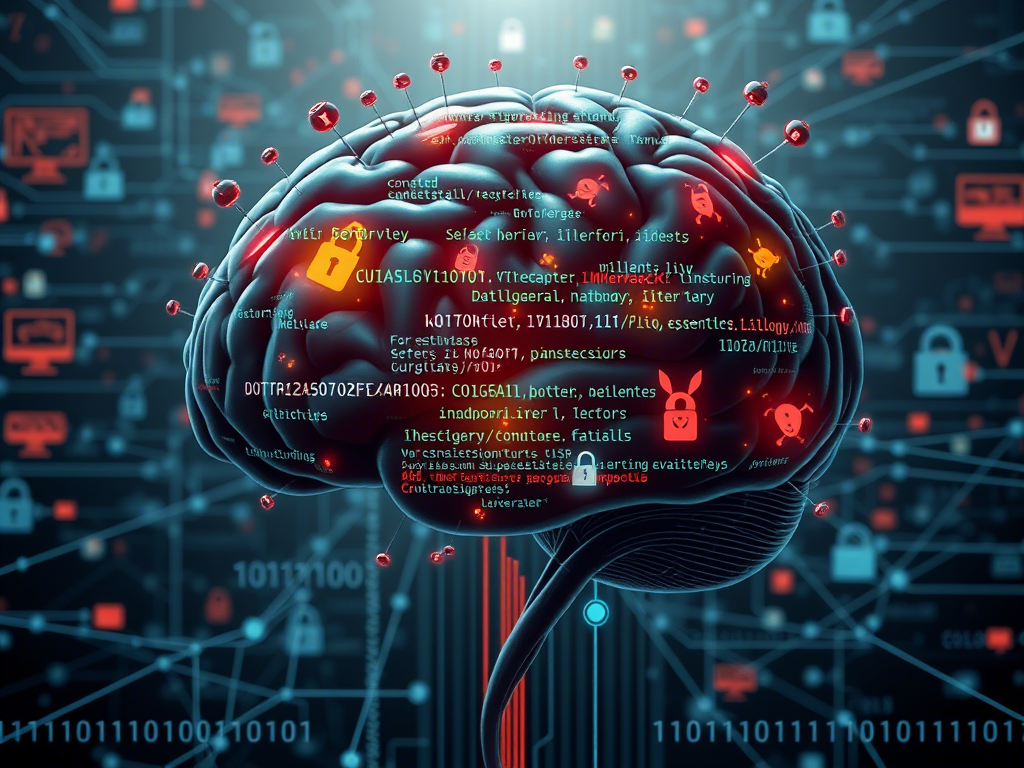Artificial Intelligence (AI) is revolutionizing sectors like healthcare and finance, but it’s also making waves in the realm of cybercrime. AI-generated malware is a new threat that exploits machine learning (ML) and automation to bypass traditional security measures. This article breaks down how AI malware works and outlines actionable defense strategies for cybersecurity professionals, IT teams, and researchers.
What is AI-Generated Malware?
Unlike traditional malware, AI-generated threats can learn, adapt, and evolve to evade detection. This makes them more sophisticated and harder to counter. Here’s how attackers use AI to amplify their efforts:
1. Polymorphic Malware
AI allows malware to continuously modify its code base, evading detection by signature-based antivirus tools. These frequent changes make it nearly impossible to spot with outdated systems.
2. AI-Powered Phishing
By mimicking natural writing styles, AI generates phishing emails that appear human-like and highly convincing, dramatically increasing risk for unsuspecting users.
3. Automated Exploit Generation
With machine learning (ML), attackers rapidly identify software vulnerabilities and create automated exploits, slashing the development time for new attack vectors.
4. Advanced Evasion Tactics
AI-generated malware uses live analysis to adjust its approach in real time, employing sandbox detection, adversarial ML techniques, or behavior evasion to avoid security measures.
5. Bypassing Endpoint Detection and Response (EDR)
AI can manipulate activity signatures, disguise itself within system processes, and delay execution until it’s no longer being monitored—rendering many endpoint solutions blind to its actions.
How to Defend Against AI Malware
The evolving landscape of AI-driven threats requires defenders to adopt equally advanced solutions. Below are key strategies to counteract these dangers:
1. Implement AI-Powered Defenses
Security teams must deploy AI-driven solutions capable of analyzing vast data sets, identifying anomalies, and detecting AI malware in real time. Tools powered by AI can match the sophistication of these emerging threats.
2. Adopt a Zero Trust Architecture (ZTA)
Introduce a Zero Trust Model that assumes no user or system is inherently secure. Strengthen defenses with strict access controls, multi-factor authentication (MFA), and ongoing system monitoring.
3. Upgrade to Advanced Endpoint Protection
Use next-generation antivirus (NGAV) and endpoint detection and response (EDR) solutions built on ML. These tools recognize behavior patterns and preemptively block suspicious activity.
4. Leverage Threat Intelligence
Equip teams with up-to-date threat intelligence and train ML models to identify emerging AI attack patterns, keeping defenses a step ahead of attackers.
5. Train Employees to Identify Threats
Human errors remain a major vulnerability. Conduct regular training to help employees recognize phishing attempts, malicious URLs, and social engineering tricks deployed by AI.
6. Regularly Patch Software
Keeping systems updated is crucial. Attackers often exploit unpatched vulnerabilities to gain unauthorized access. Frequent software patching helps close these doors.
7. Behavioral and Anomaly Analysis
Behavior-based tools monitor abnormal patterns in network traffic, user activity, and endpoint devices. These analytics can detect threats that bypass traditional defenses.
Why Act Now?
AI-driven cyberattacks are no longer a future possibility—they’re happening now, and organizations must act decisively to protect themselves. Whether you’re leading a blue team or a cybersecurity organization, adapting to these threats with agile, AI-enhanced defensive strategies is no longer optional but essential.
By combining proactive defense mechanisms with human vigilance, you can lower exposure to risk and safeguard your systems more effectively.
Key Takeaways
- AI malware adapts and evolves, offering attackers an unprecedented advantage over traditional defenses.
- Proactive AI-powered tools are essential to detecting and responding to these threats.
- Strategies like Zero Trust Architecture, regular patching, and behavioral analysis fortify your defenses.
- Cybersecurity training is critical to protecting organizations from AI-powered phishing and social engineering.
Prepare your organization for the next generation of cybersecurity threats. Arm your security teams with advanced tools and continuously refine your strategies to stay ahead of attackers.





